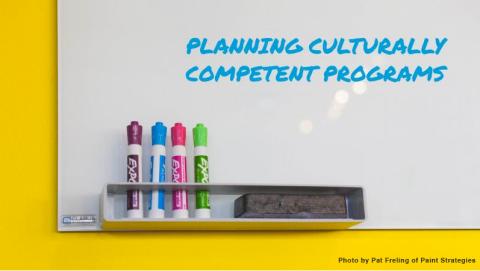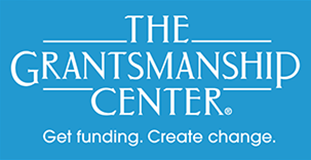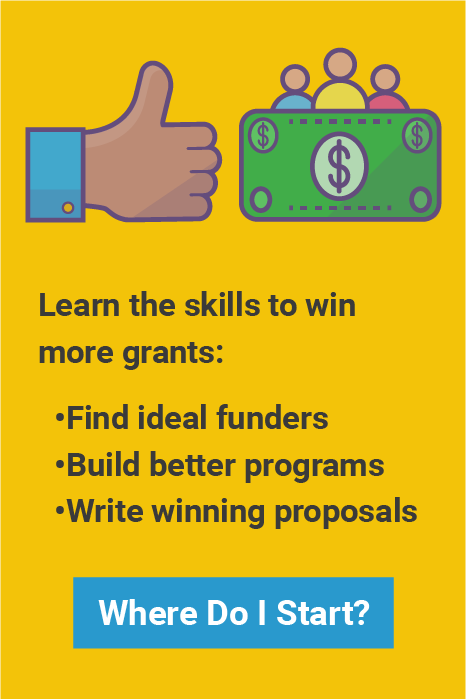
Effective programs are more than well designed and more than appropriately funded―they’re culturally competent. Truly effective programs are planned and operated with a high-level of respect for and sensitivity to the groups they’re intended to benefit.
Different disciplines have varying definitions of cultural competence, but a pragmatic approach is simply this—culturally competent programs value diversity and ensure that activities, procedures, systems, and staffing are aligned to support the highest level of engagement and best outcomes for those who will participate. Though it sounds simple, achieving cultural competence in programming takes commitment, effort, and self-examination.
Even a quick glance reveals many cultural traits to consider including race, ethnicity, language, gender, sexual orientation, educational levels, and cultural norms. Then layered within those arenas are issues of socio-economic status, age, physical abilities, religious beliefs, political beliefs, and more. Effective nonprofits work hard to understand the complex interplay of cultural elements within their target population, and they use that knowledge to design approaches that work.
Here are some baseline approaches for building programs and organizations that are culturally competent.
- Assess and address your own biases. Everyone seems to be stuck with some unconscious bias. Nonprofit leaders must take the lead in assessing, confronting, and resolving their own cultural assumptions and must ensure that all staff members do the same. Because this work is hard and can be messy, it’s usually a good idea to engage a well-qualified consultant or educational organization to help. Self-knowledge is an important step in cultural competence, and unless staff members can model genuine sensitivity and respect, they’re in the wrong line of work.
- Assess your organization’s policies and procedures. Institutional bias is a well-known phenomenon―even when an organization means well, its policies and systems may be hurting the people it intends to help. A registration process that seems like standard procedure to one person may be offensive to someone from a different culture. Registration questions may seem intrusive or inappropriate. A client feedback form might be inaccessible to some people unless it’s produced in different languages or available in a different version for those who can’t read. Assessing organizational operations from a perspective of cultural competence takes thought, time, and persistence. A diverse task force of staff members and clients has a better chance of creating policies and procedures that are sensitive and inclusive.
- Include client representation on your board of directors. One of the best ways to ensure continuous input from your beneficiaries is to make a place for them at the governance table. The bylaws of some organizations specify the requirement for client representation on the board of directors, and some funders also require it. But even if client service on the board is not a good fit for your organization, there are other ways to ensure continuous input. You might invite clients to serve on specific board committees, hold regular board-client feedback meetings, or establish a client advisory committee.
- Clearly define the target population. If your organization serves a diverse constituency, you’ll need a solid understanding of who will be participating in a program before you plan the details. For example, closing a group counseling session with a round of hugs may be uncomfortable for clients for whom personal touch has a specific place and meaning. And sharing personal stories and feelings in a group setting may not work for some. Clearly and specifically identifying the target population is a primary step in program planning. Once you’ve identified the broad group (e.g., teenagers), looking deeper into its cultural composition will enable you to plan a more effective program.
- Engage your client community in assessing needs and planning programs. The people you want to assist know more about their problems and needs than anyone else. They also understand what will and will not work in addressing their needs. Once you’ve identified the target population, pull together a diverse team from that group and engage them in needs assessment and program planning. A program that reflects the voices and views of those affected will have more impact—it will be more culturally competent.
- Recognize individuality. Above all, you’ve got to remember that the people your organization serves are unique individuals. They’re not just stereotypical representations of their cultural group. A competent organization recognizes and honors cultural diversity, but also treats people as individuals. It does not cross the line into cultural stereotyping.
- Educate yourself. Type “publications on cultural competence” into your internet browser and you’ll find all sorts of free, up-to-date material. The United States Substance Abuse and Mental Health Services Administration offers several publications on cultural competence in treatment. Board Source offers a publication on creating diversity on your board of directors. The Association of American Medical Colleges offers a guide for evaluating education and training on cultural competence. Advocates for Youth offers various tips for creating culturally competent programs. With a little digging, you should be able to find materials specific to the type of services your organization provides.
When it comes to developing grant proposals or making a big “ask” to an individual donor, don’t wait for the potential funder to raise the question. Take the lead. A commitment to cultural competence is a commitment to effectiveness. In grant proposals, funding case statements, and general promotional literature make it clear that your organization understands, honors, and involves the people and communities it serves.
Barbara Floersch, Chief of Training & Curriculum, The Grantsmanship Center



